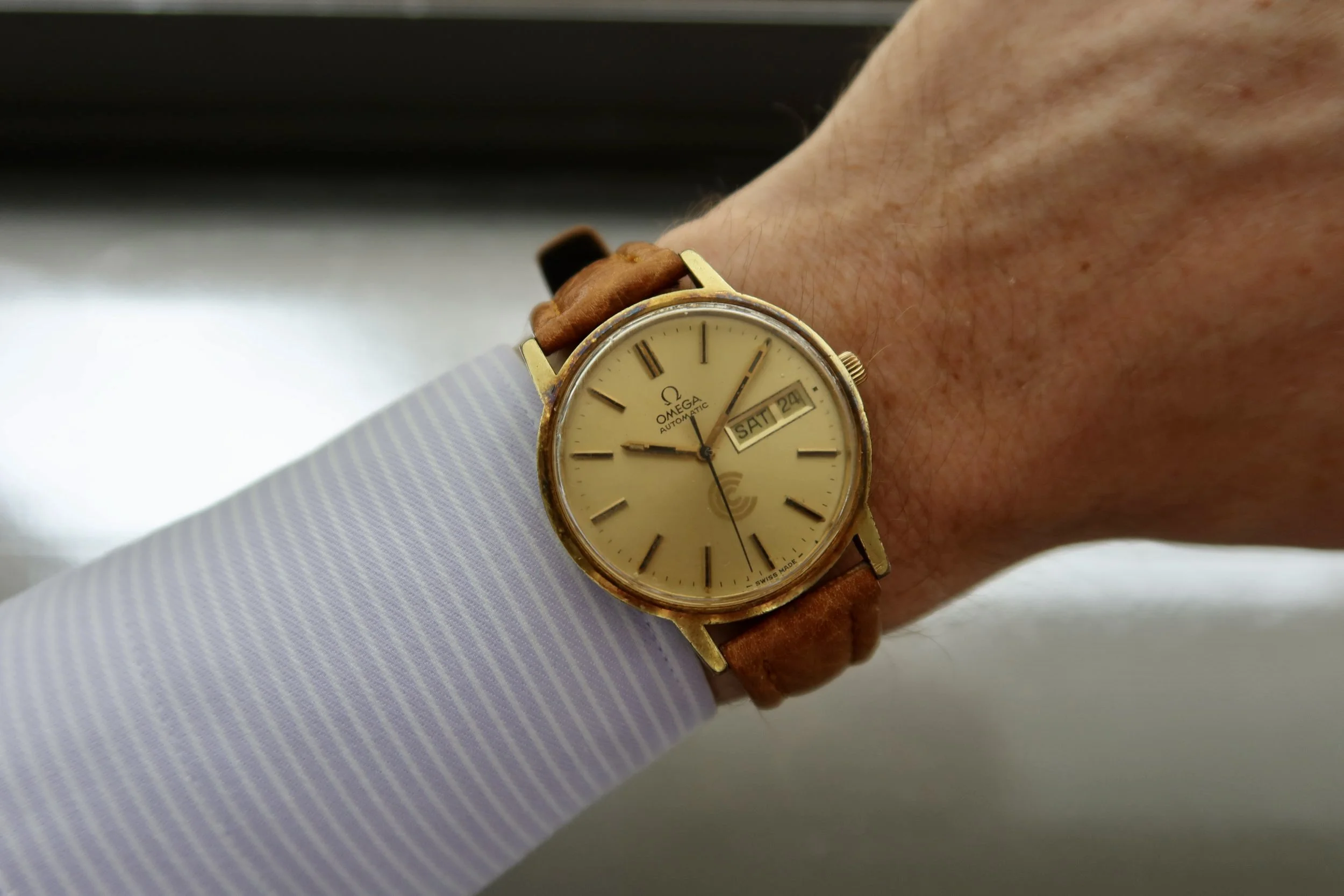The Importance of Variety in Collecting Vintage Watches
Experiencing different types of vintage watches is probably the most important rule in collecting. Sure, there are some collectors who like to collect one specific reference or model and it is a completely acceptable (and even a very cool) way of collecting. But for that individual to know they like that model, they have to have seen other models of watches. Today we have four watches, each of unique design, complication, construction, and finishing.
Dial variations are just one way collectors enjoy vintage watches. This reference 1116 is a great example. The watch was manufactured in 1962. It has a 10k gold filled case made by Schwab & Wuispard Case Co based on caseback stamps. The case is in good condition, with only a few scratches on the case near the crown. The lugs are short and thin. The dial is made of linen, with gold, applied hour markers and Longines logo. The gold caseback has a engraved dedication to “J.A. Zonlick From Your Stanley Associates 6-28-63”. The inscription likely points to the sale and gifting of the watch in 1963 to JA Zonlick from Stanley Associates that could have been based in Massachusetts, USA.
Watches with alarm complications are an interesting part of watchmaking. Whether it is the Memovox from Jaeger LeCoultre, the Cricket from Vulcain, or this reference 7742 from Girard Perregaux, these watches were used to notify the wearer of a moment in time. The watch dates to the 1960’s and has a stainless steel, 34mm case. The case is in good condition, with bevels still visible on the lugs, but likely has been lightly polished. The dial is a patina-nerd’s dream - the dial has aged to a golden brown tone. The alarm crown located at 2 o’clock is original and the crown at 4 o’clock has likely been replaced. The watch houses the caliber 11-09 manual wind alarm movement.
The competition to make the worlds thinnest automatic movement was fierce. Universal Genève was victorious with this model. The watch dates to 1965. The 18k solid gold case has been lightly polished, but the hallmark and serial number are still strong and visible. The dial is well preserved and shows sign of its age. The lugs are long and sharp. The watch houses the caliber 66 movement which was the thinnest automatic movement when created, equipped with a micro-rotor.
The dial of the watch is what captures the attention of collectors with this reference 727-S-724-40. Complete with a guilloche finished outer ring of the golden dial, the watch is adorned with 4 diamond hour markers. The dial appears to have been polished, as the “G” in the Longines name on the dial is missing features. The watch is cased in a 34mm case in solid 14ct gold. The case was manufactured by DiVincenzo & Arienti, a Brooklyn-based case maker who manufactured cases for Longines, Omega, and Hamilton. The lugs of the watch are sharp and crisp, integrated nicely with the case with visible bevels. The watch houses the caliber 23ZS manual wind movement, a highly respected an supremely finished movement.
As always, we will dive deep into each of these watches to give you an in-depth look at each piece, their histories, references, movements and possible provenance. Stay tuned!
Enjoy!










